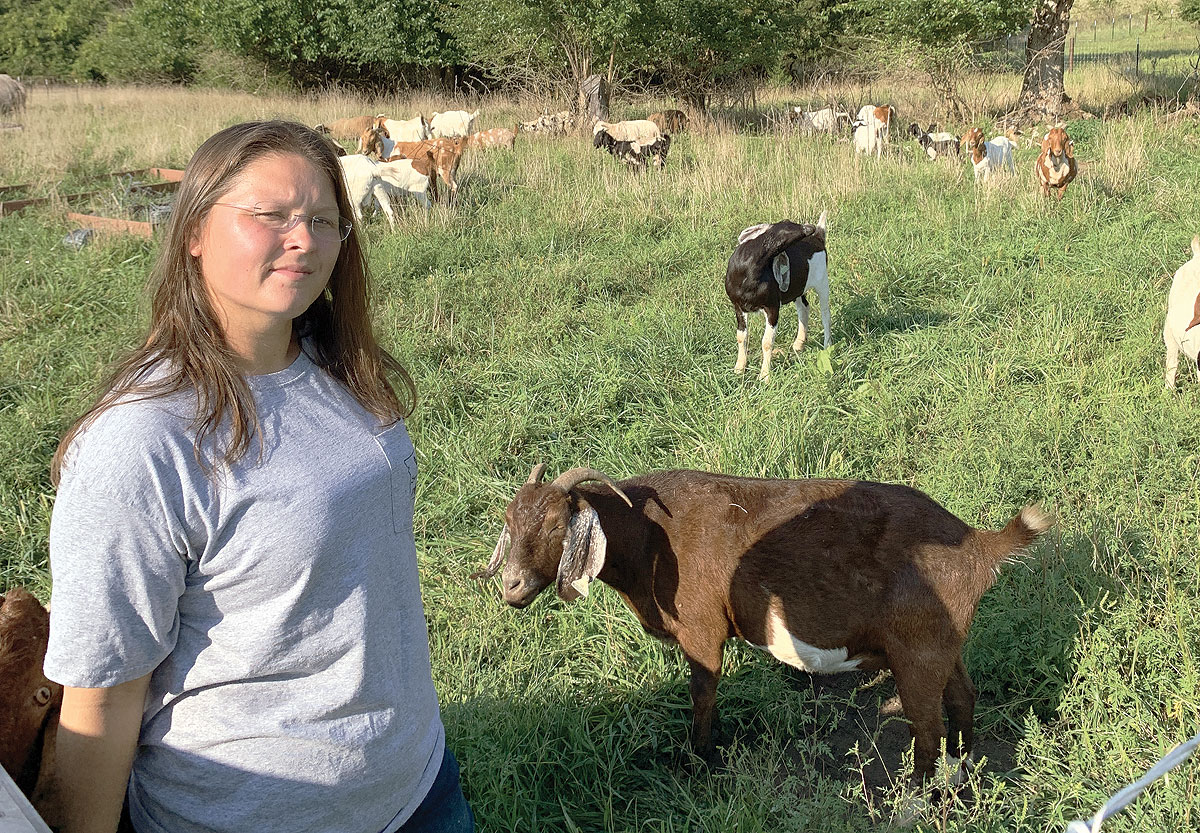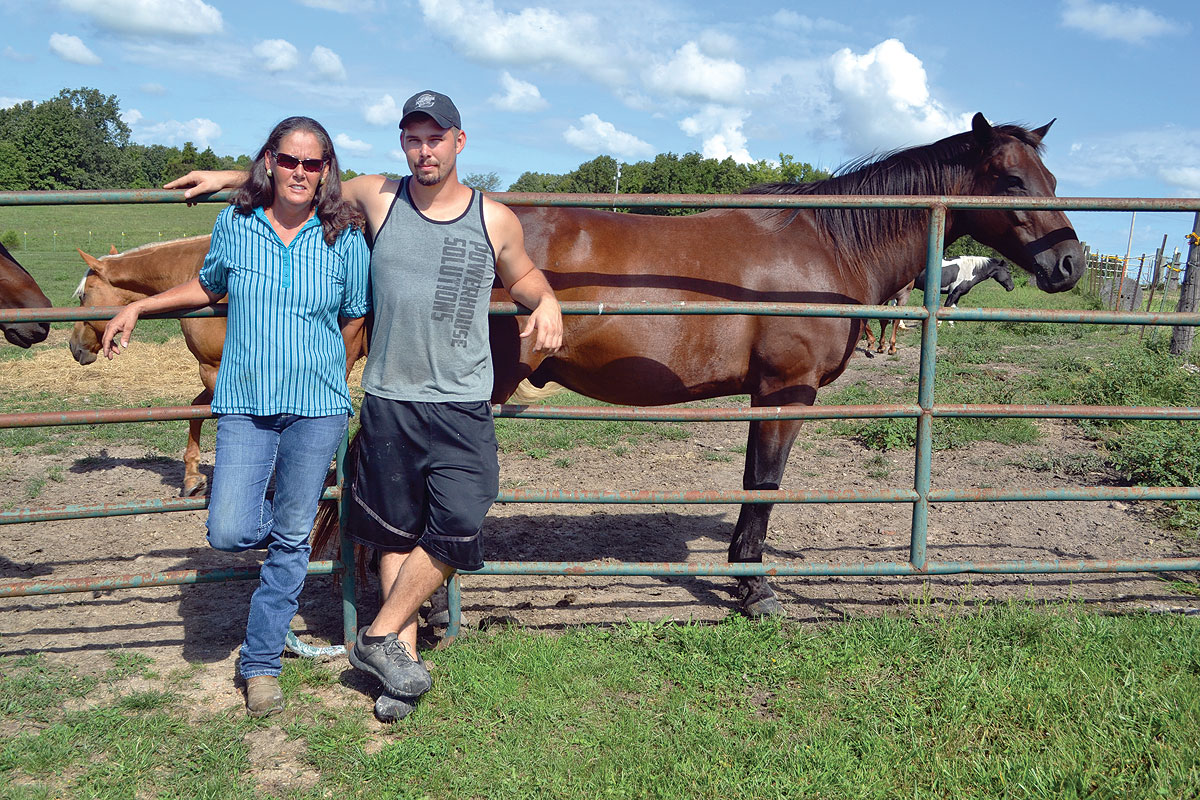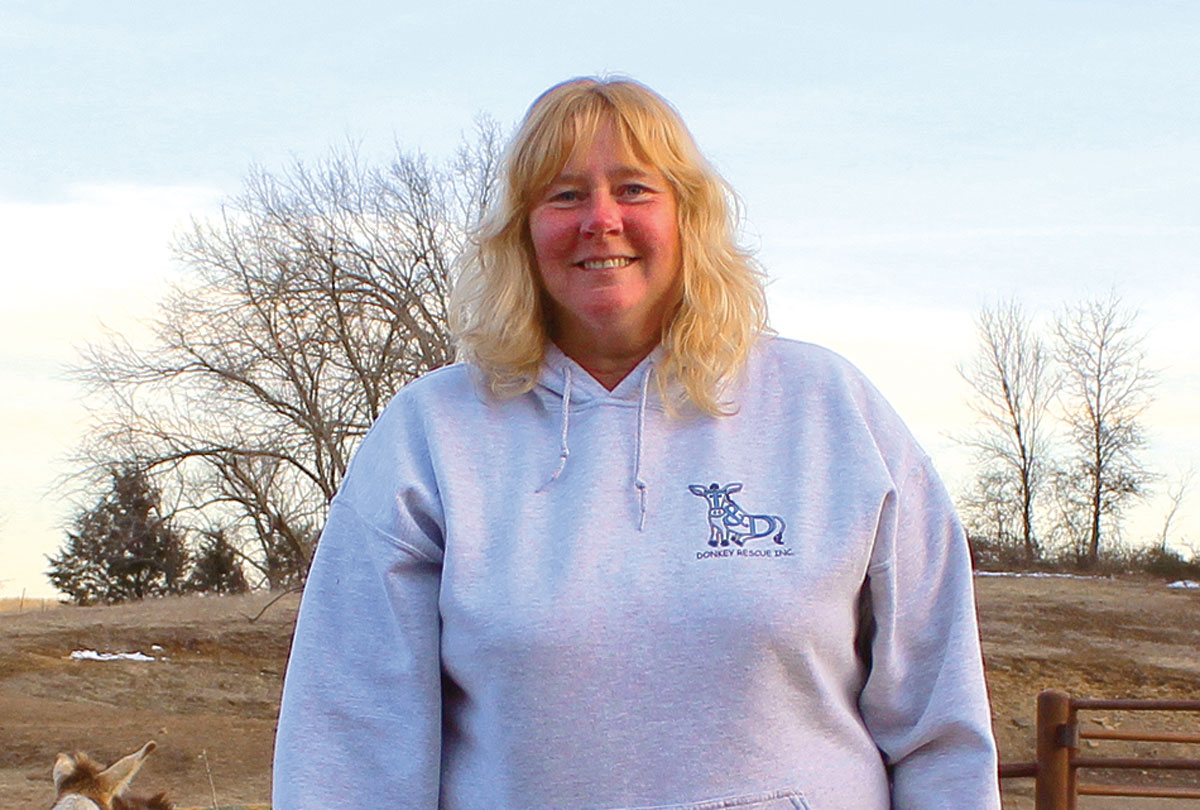
Bryan and Maria Dinsmore strive to raise Boers to specific breed standards
Bryan and Maria Dinsmore of Stonehatch Farms stumbled into raising goats and discovered unknown potential.
Shortly after moving from Springfield, Mo., to their 23-acre property near Halfway, the Dinsmore’s kind of fell into the goat business when one of their neighbors were selling two goats (dairy/Boer mix) and a livestock guardian dog. Bryan, who is an electrician, and Maria, who recently quit her job to work on the farm fulltime, said they knew and loved the dog, but knew nothing about goats. Because the neighbor was selling them as a package, they agreed to take the goats, too.
After purchasing some electrical netting and finding a good spot on their property, they put the goats out. They quickly realized just how much the goats helped the land since their property had a lot of overgrowth that the goats thrived on.
“We saw how good they did on the property, and said ‘goats are for us,’” Maria said.
Soon afterward, they upgraded their fencing. Maria said the number one expense is probably the facilities, specifically fencing that will keep goats contained, not just barbed wire. She’s found that small woven wire or a barbed/hot wire combination works well.
The goats graze a lot of the time, but Maria also gives them MFA Show Goat feed that contains 18 percent protein and 4 percent fat, along with providing minerals such as copper, a salt-based cornmeal option, a loose mineral, and free-choice baking soda. Where the animal is in their life cycle determines what type of feed she uses. She also puts probiotics in the water for good gut health.
The Dinsmores decided to pursue raising Boer goats so their children could show at the local fairs. Boer goats have a larger show industry than any other meat goat breed. One of Bryan’s co-workers has a daughter who participated in 4-H and showed goats, so they decided to talk with her to learn more.
Characteristics for show goats vary, depending on the specific judge for each fair. Maria tries to raise goats as close to the Boer standards as possible and favors ones that have good parasite resistance and exceptional mothering. She’s found that 4-H is an amazing organization for kids.
“They go above and beyond for children,” she said.
On the farm, the boys, 8-year-old Clay and 9-year-old James, have the job of feeding the kid goats, checking for chicken eggs and getting the goats ready for 4-H shows, which includes washing, brushing and trimming them. After the show market, the goats are auctioned at a premium sale in Polk County. This sale allows the participant to keep the animal and put that money back into their business to grow it.
Later, at the Ozark Empire Fair or Missouri State Fair, they sell in a terminal sale. This year, James got Grand Champion in the Meat Goat Division for his year old and under wether at the Polk County Fair.
As far as breeding, Boer’s cycle every month, all year long. However, the normal breeding season starts in September and goes through December. Maria strives to do everything as natural as possible. It’s very common for does to have twins, and Maria will typically sell the does who produce singles twice in a row.
When the goat kids are born, the Dinsmores don’t help them find the momma or assist in them standing on their own.
“If they can’t stand on their own, if they can’t find their mom’s teats on their own, then those are not strong animals that you want to keep in your herd,” Maria said.
Kids are weighed at birth, then at 30 days, 60 days and 90 days. Kids are weaned at 90 to 100 days and are sold soon after.
Maria works hard to make sure the herd is healthy. Does are vaccinated with a CDT shot approximately two to three weeks prior to kidding. Kids will get a booster at 21 days, along with a CL vaccination. Parasites are a big topic in the industry and can kill livestock quickly. Maria said it’s important to monitor pasture rotation, FAMACHA testing (checking the eyelid color), making sure they’re getting the right dosing of worming medication based on animal weight and not overdosing, which can build resistance to the deworming medication.
Maria also said she spends a lot of time on documentation and record-keeping, so she knows how healthy each generation has been.
“It’s more profitable to keep records because you realize what you’re losing money on and what you’re not,” she says. She also uses software programs like Excel spreadsheets and an app called Livestocked to keep accurate records.
A majority of Stonehatch Farms’ sales come from people who see the quality of their goats at the 4-H shows. Most recently, the Dinsmores had 52 goats, with many already sold and awaiting pickup.
Maria’s advice for anyone who might be thinking about raising goats for the first time: “Have your facilities in place first and start small. There’s definitely a learning curve. Goats require more time, I think, than people realize because you need to watch your animals, observe them for illnesses. If you can catch an illness right away, you can usually treat it.”
Bryan and Maria hope to help spread knowledge about goats, specifically Boers, to the community, as well as getting more children interested in the breed.
“There’s a lot of opportunities for kids to show Boers and raise them,” Maria said. “There’s also a lot of benefits to having them, especially in this area. If your property can support it, putting goats and cattle in a nice pasture or acreage with a good fence, they’ll do great for you… You can take pasture management classes from the USDA, and you can apply for grants that can help you with your facilities like fencing and waterers.”






